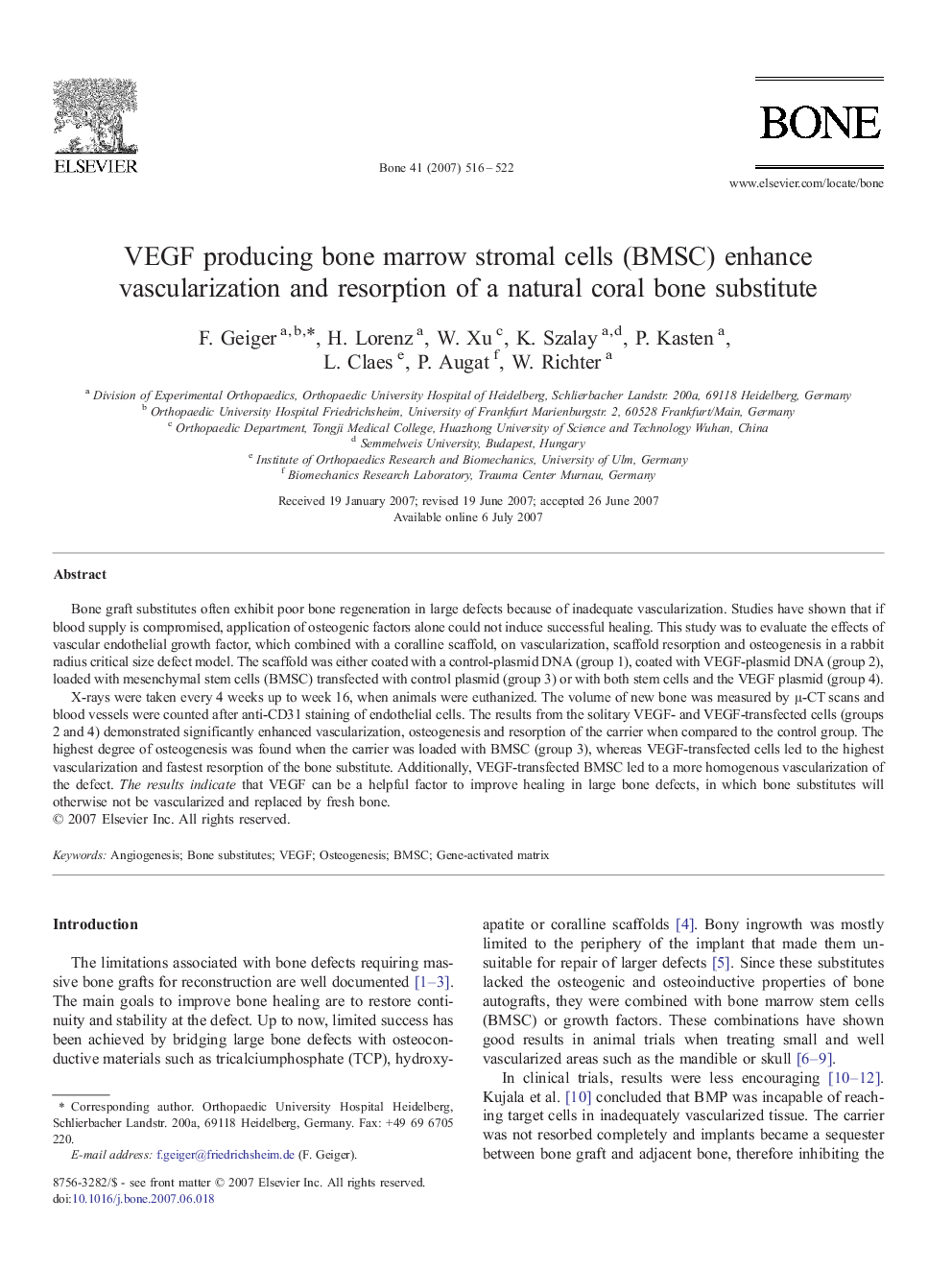| Article ID | Journal | Published Year | Pages | File Type |
|---|---|---|---|---|
| 2781895 | Bone | 2007 | 7 Pages |
Bone graft substitutes often exhibit poor bone regeneration in large defects because of inadequate vascularization. Studies have shown that if blood supply is compromised, application of osteogenic factors alone could not induce successful healing. This study was to evaluate the effects of vascular endothelial growth factor, which combined with a coralline scaffold, on vascularization, scaffold resorption and osteogenesis in a rabbit radius critical size defect model. The scaffold was either coated with a control-plasmid DNA (group 1), coated with VEGF-plasmid DNA (group 2), loaded with mesenchymal stem cells (BMSC) transfected with control plasmid (group 3) or with both stem cells and the VEGF plasmid (group 4).X-rays were taken every 4 weeks up to week 16, when animals were euthanized. The volume of new bone was measured by μ-CT scans and blood vessels were counted after anti-CD31 staining of endothelial cells. The results from the solitary VEGF- and VEGF-transfected cells (groups 2 and 4) demonstrated significantly enhanced vascularization, osteogenesis and resorption of the carrier when compared to the control group. The highest degree of osteogenesis was found when the carrier was loaded with BMSC (group 3), whereas VEGF-transfected cells led to the highest vascularization and fastest resorption of the bone substitute. Additionally, VEGF-transfected BMSC led to a more homogenous vascularization of the defect. The results indicate that VEGF can be a helpful factor to improve healing in large bone defects, in which bone substitutes will otherwise not be vascularized and replaced by fresh bone.
